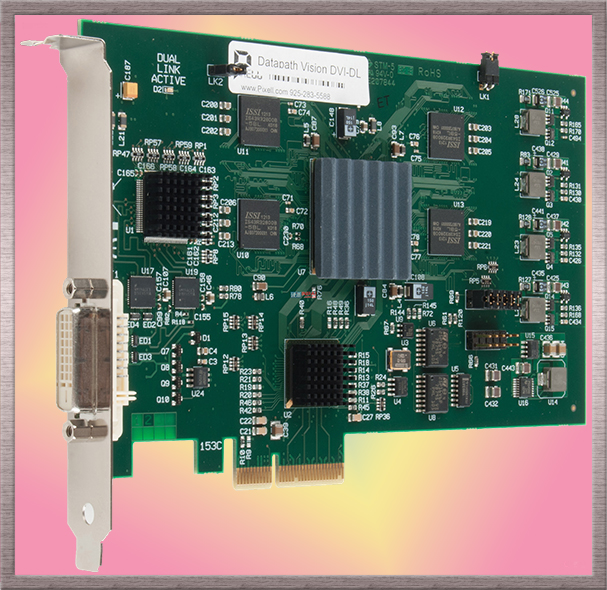A Captivating Experience.
Datapath DVI-DL
Technically somewhat aloof from the competition, this industrial grade image stasher was employed by the enterprising hardware review site PC Per as a means of conducting advanced forms of frame examination and deconstruction, their aim being to assess the rendering consistency of Nvidia’s and AMD’s graphics cards. Its lord and master, Datapath, took form in 1982, and steadily emerged as a prime player in the field of creative video manipulation.
Installing the DVI-DL in a secondary PC was akin to having the facility to run FRAPS or DXtory on a dedicated capture system, a truly alluring prospect.

The card’s Spartan back plate accommodated a lonesome DVI-D input, capable of ingesting dual link resolutions of upto Quad HD 2160p (3840×2160 at 30hz), assuming the capture software and codecs that resided within were themselves equal to the challenge.
Since it flaunted full compatibility with Microsoft’s “DirectShow”, no capture application was enclosed, just the WDM driver package and a handful of fundamental configuration tools, leaving the purchaser to choose a program that also adhered to the standard and catered to their streaming, monitoring or recording aspirations.
After negotiating my way through a plethora of forum expertise and the rich array of options presented by an opulence of compliant software – in itself a steep learning curve – I eventually selected VLC Player and XSplit Broadcaster and configured all files to be recorded in the ubiquitous MPEG-4 and x264 formats, the latter being XSplit’s default and only codec.
First, the bad news, garnering a smooth recording at Quad HD using either of these forms of compression proved impossible.
XSplit permitted adding a custom template for the resolution and correctly detected the 3840×2160@30hz signal dispatched from the Titan Card but outright refused to record while VLC Player both accepted and recorded the transmission but any abundant or pronounced screen activity was accompanied by severe stuttering and pixilation. Since the CPU and hard drive had plenty left in reserve it was as though the codec itself had transcended its rendering allowance.




